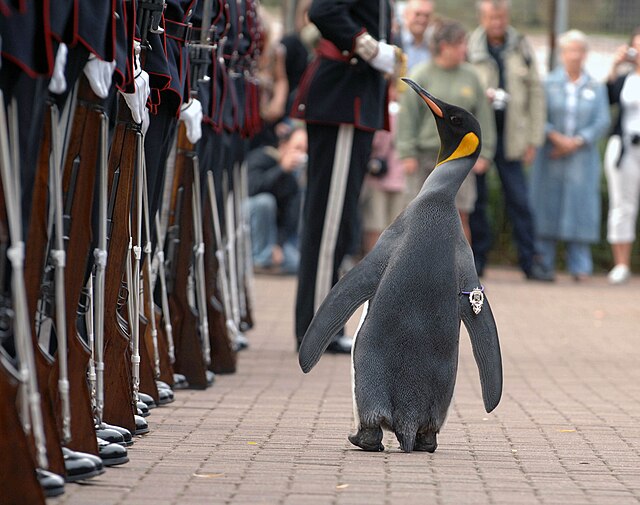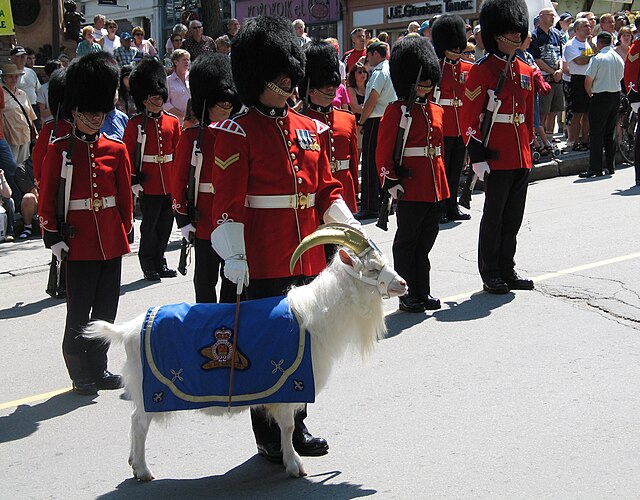A military mascot, also known as a ceremonial pet or regimental mascot, is a pet animal maintained by a military unit as a mascot for ceremonial purposes and/or as an emblem of that unit. It differs from a military animal in that it is not employed for use directly in warfare as a weapon or for transport.
Nils Olav inspects troops of the Norwegian King's Guard, of which he is colonel-in-chief
An Australian soldier playing with a kangaroo while deployed in the Sultanate of Egypt. A number of service members brought animals with them during war.
Sable Chief, a Newfoundland dog with his handler. He served as the mascot for the Royal Newfoundland Regiment during the First World War
Batisse the Goat, the mascot for the Royal 22e Régiment of the Canadian Army
Military animals are trained animals that are used in warfare and other combat related activities. As working animals, different military animals serve different functions. Horses, elephants, camels, and other animals have been used for both transportation and mounted attack. Pigeons were used for communication and photographic espionage. Many other animals have been reportedly used in various specialized military functions, including rats and pigs. Dogs have long been employed in a wide variety of military purposes, more recently focusing on guarding and bomb detection, and along with dolphins and sea lions are in active use today.
Monuments for military animals in Ottawa, Ontario.
A U.S. Navy dog handler at the War Dog Memorial in the National War Dog Cemetery at Naval Base Guam. The cemetery honors the dogs—mostly Doberman Pinschers—that were killed in service with the United States Marine Corps during the Second Battle of Guam in 1944.
Circus elephants clear bomb damage, Hamburg, Germany, November 1945.
Photo released on November 12, 2001, claiming to show "the first American cavalry charge of the 21st century" in league with Northern Alliance forces in the Battle of Mazar-i-Sharif.








